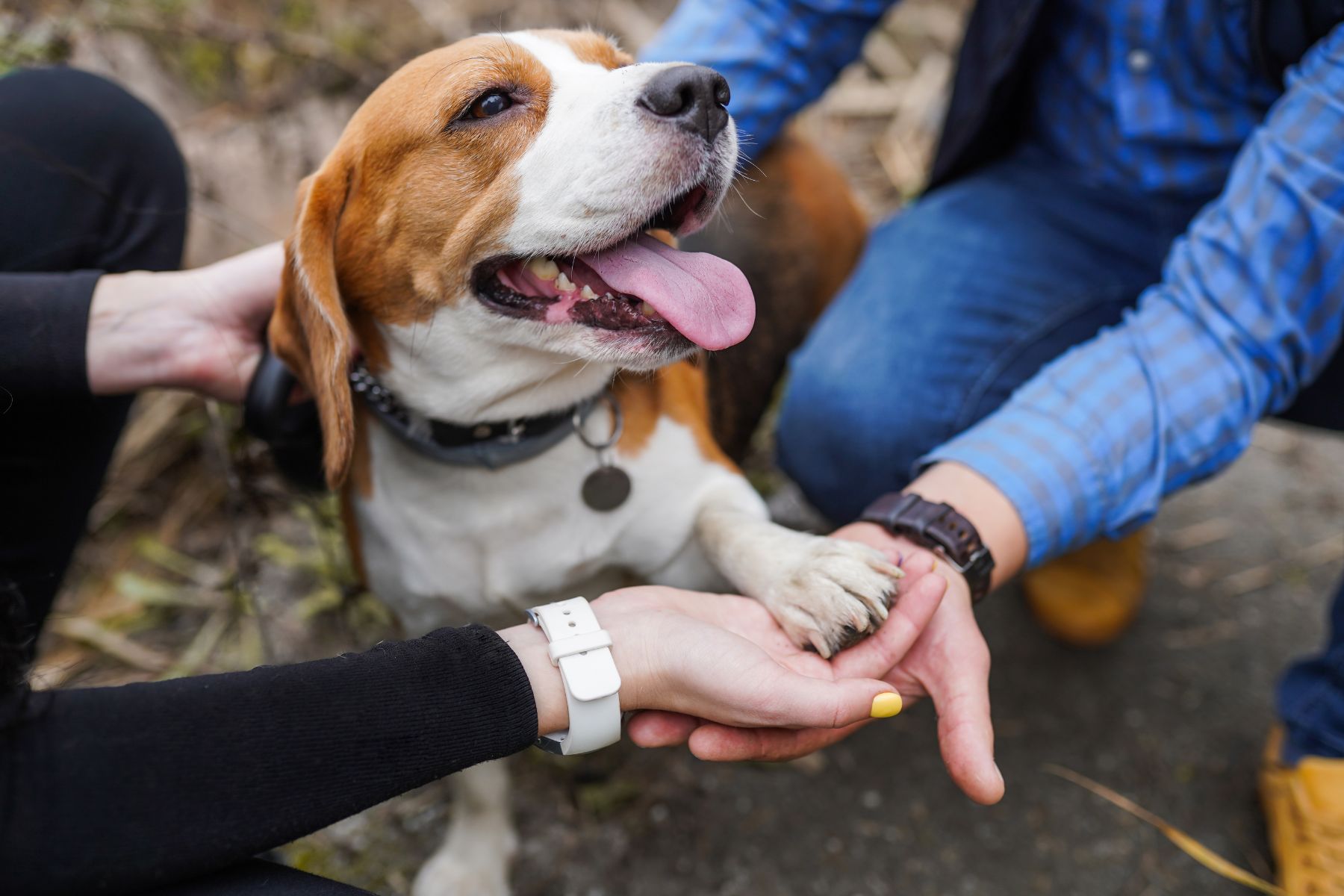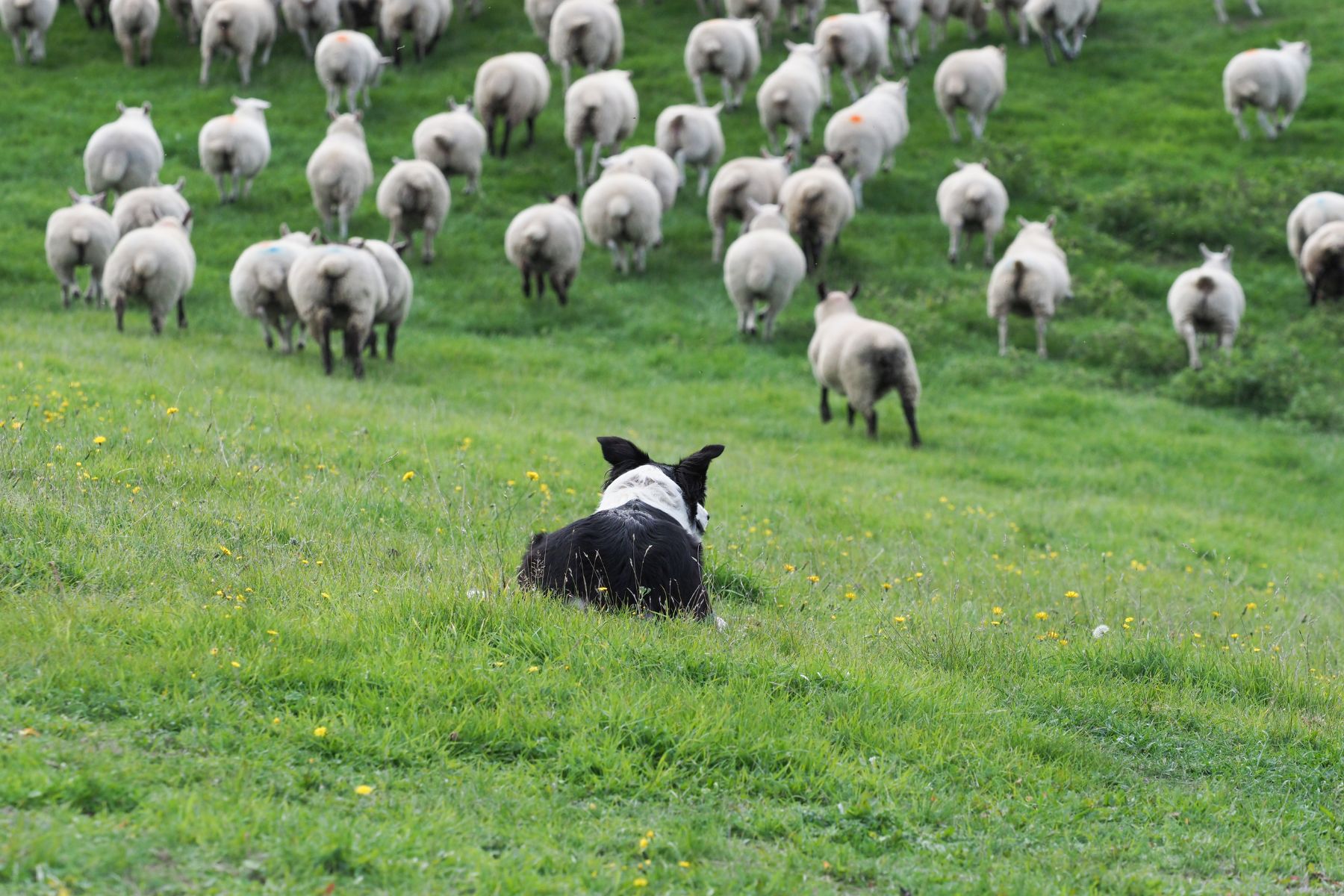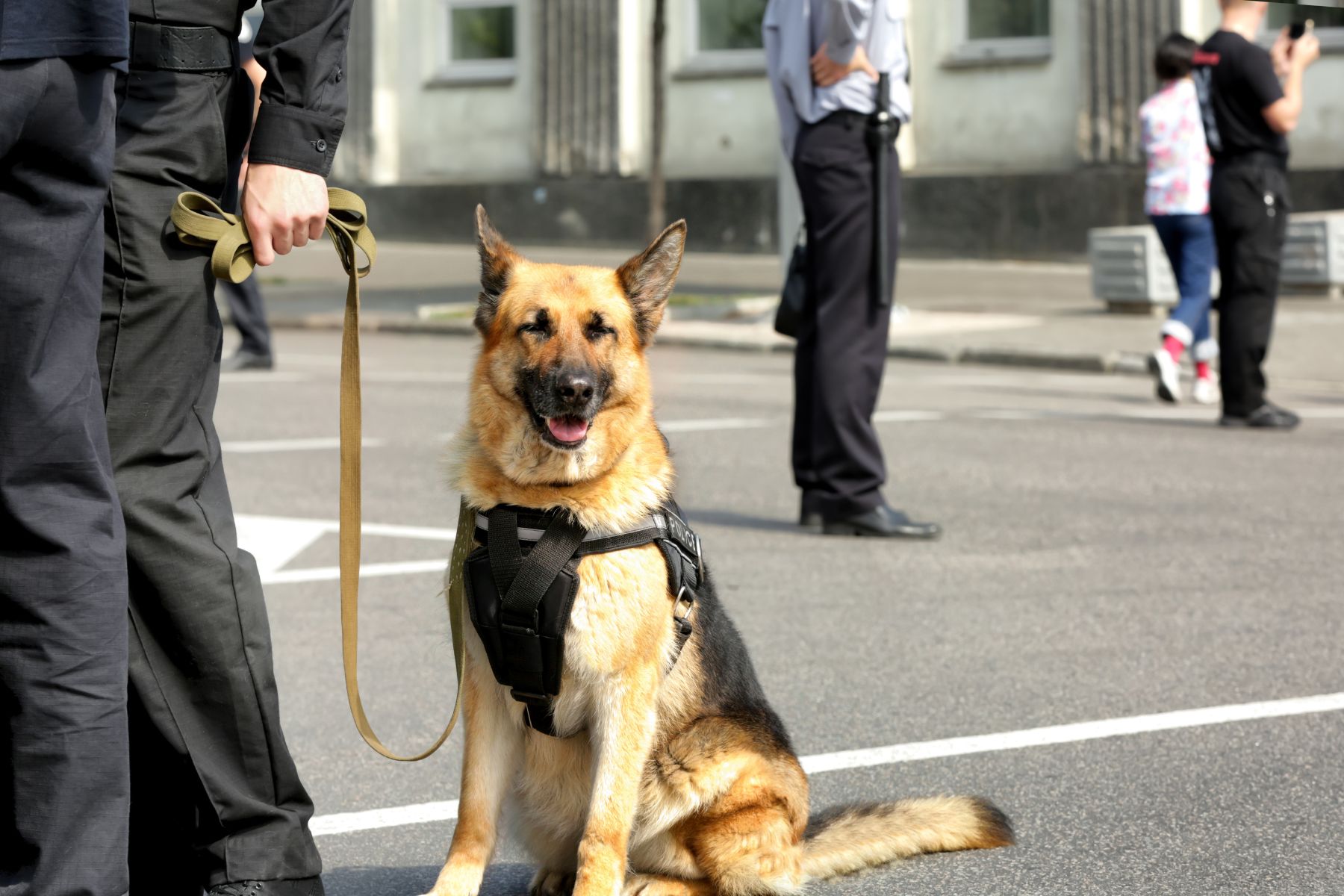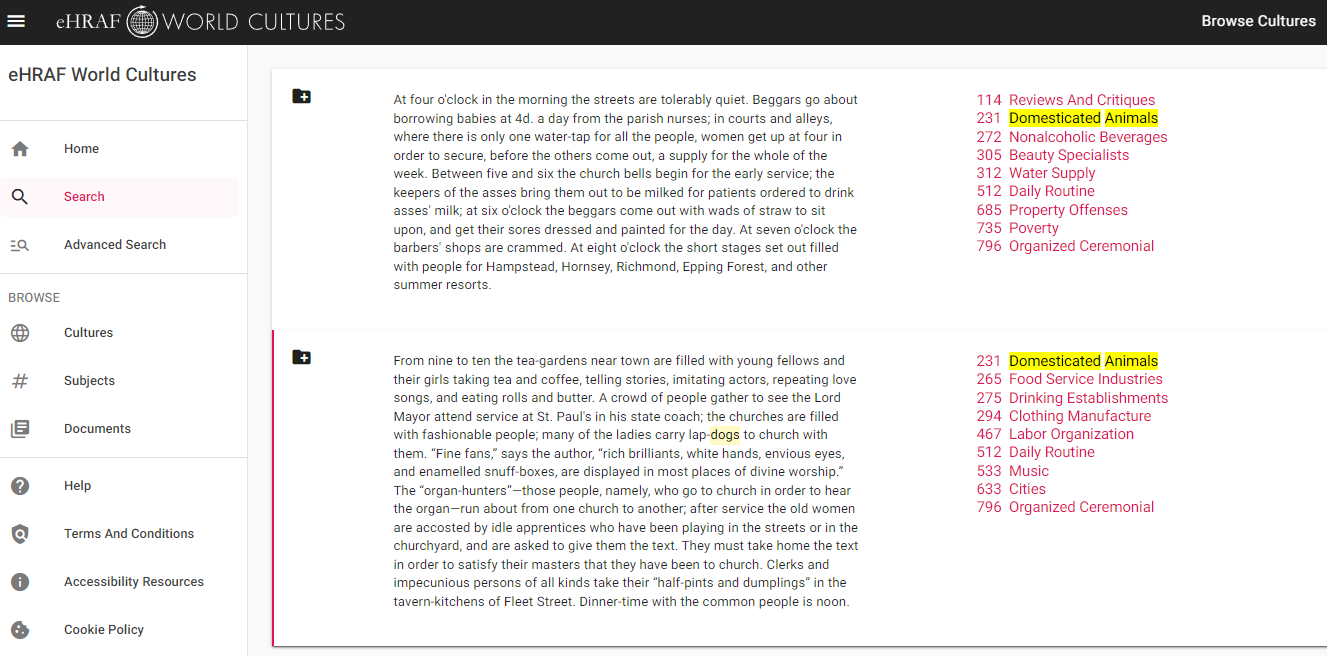The special relationship between dogs and humans is endlessly fascinating. For many of us, dogs are at the center of our homes and hearts. However, most of what we know about dog-human bonds, dog behavior, and canine cognition is limited to Western, Educated, Industrialized, Rich, Democratic (WEIRD) societies. Therefore, “dog cognition research suffers from the same biases as general psychology” (Chira, Kirby, Epperlein, Bräuer 2023).
The paper titled Function predicts how people treat their dogs in a global sample by Angela Chira, Kathryn Kirby, Theresa Epperlein, and Juliane Brāuer uses data from eHRAF World Cultures to shed light on the relationship between dogs and humans in non-Western societies. The researchers conducted their study by collecting ethnographic data on the function, perception, and treatment of dogs in 124 globally distributed societies using the eHRAF World Cultures database.
The results challenge the idea of universal temperaments for dogs and the notion that all dogs are treated the same cross-culturally. Therefore, there is no one-size-fits-all ‘typical’ behavior for dogs as they develop a vast range of social-cognitive skills depending on their environment. In an article for Psychology Today describing the study, Bräuer (2023) writes that “the more functions dogs have in a society, the closer the dog-human relationship is likely to be.”
Bräuer elaborates,
“For some reason, I had assumed that dogs only had one function in non-Western societies. But that is not the case. For example, in many societies dogs are used for both, hunting and guarding. It turns out that the more functions dogs have in a society, the closer the dog-human relationship is likely to be. Thus, there is more of what we called positive care and personhood and less negative treatment.”
The researchers searched eHRAF World Cultures specifically for information about dogs and identified societies in which dogs serve any of these five main functions:
- Hunting
- Defense
- Guarding
- Herding
- Carrying or Transporting Supplies
They also collected data on how dogs are treated in those societies and coded it into three dimensions:
- Positive care (e.g. dogs are allowed indoors, dogs receive healthcare, puppies are raised)
- Negative treatment (e.g. dogs are not fed, dogs are physically abused, dogs are regularly culled)
- Personhood (e.g. dogs are named, dogs are mourned, dogs are perceived as family members)
The researchers found that across all societies, the functions of dogs are a good predictor of how they are treated by their owners (Chira et al. 2023). They also found that not all of a dog’s jobs influence treatment equally. According to Bräuer,
We also discovered that there were more elements of personhood for dogs in hunting societies. Thus, where dogs are kept for hunting, humans are more likely to name them and perceive them as family members. Despite the data we have collected, we cannot accurately predict whether hunting dogs are treated like people, or whether there is more positive care for herding dogs.
Dogs have long been described “man’s best friend.” Archaeological and ethnographic records can tell us more about the complexity and nuanced details of the dog-human relationship.
Canine Cognition
Interested in learning more about canine cognition?
Several major universities have research groups specially focused on dog behavior. These include the following:
Max Planck Institute of Geoanthropology – DogStudies Research Group
Dr. Juliane Bräuer is the head of the DogStudies Lab at the Max Planck Institute of Geoanthropology in Jena, Germany, where she studies the cognitive aspects of dog domestication. She is a regular speaker on the subject of animal cognition, the author of several books, and a contributor to Psychology Today.
Yale University – Canine Cognition Center
Dr. Laurie Santos is the Director of the Comparative Cognition Laboratory at Yale University. Dr. Santos hosts the podcast, The Happiness Lab, In 2018, her course Psychology and the Good Life became the most popular course in Yale’s history, with approximately one-fourth of Yale’s undergraduates enrolled.
Harvard University – The Canine Brains Project
Dr. Erin Hecht directs The Canine Brains Project at Harvard University and is the recipient of the 2022 Alfred P. Sloan Research Fellowship in Neuroscience and an NSF CAREER Award. Her research focuses on neuroanatomical specializations in dogs, primates, and humans.
HRAF Resources
HRAF has resources which may of interest for those studying the dog-human relationship. These include the following:
Unconditional Love: Is devotion to pets a cultural universal?
Dr. Francine Barone
Dogs and the Hands That Feed: The Utility of Dogs in Hunter-Gatherer Societies
Dr. Jeffrey Vadala
Aztec Dog Burials in eHRAF Archaeology
Matthew Longcore
eHRAF Workbook – Burial Practices: Animals and Humans
Human Relations Area Files. 2023. “Report On ‘Dog-Human Coevolution,’ by Jaime Chambers et Al.” Edited by Carol R. Ember. Explaining Human Culture. Explaining Human Culture. Connecticut; New Haven, CT: Human Relations Area Files, Inc. https://hraf.yale.edu/ehc/documents/1323.
Human Relations Area Files. 2023. “Report On ‘Function Predicts How People Treat Their Dogs in a Global Sample,’ by Angela M. Chira et Al.” Edited by Carol R. Ember. Explaining Human Culture. Explaining Human Culture. Connecticut; New Haven, CT: Human Relations Area Files, Inc. https://hraf.yale.edu/ehc/documents/1437.
eHRAF Research on Dogs
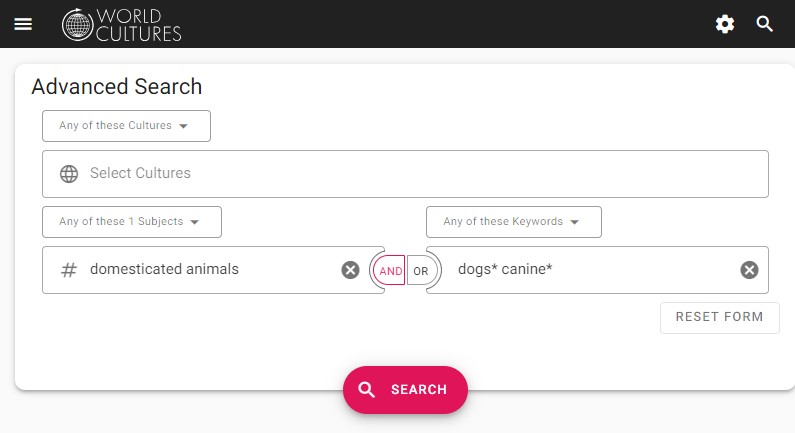
Advanced Search using OCM identifier 231 – Domesticated Animals in the subjects box and the keywords dog* and canine*
Interested in conducting your own research on the dog-human relationship? Use Advanced Search in eHRAF World Cultures or eHRAF Archaeology. Add OCM identifier 231 – Domesticated Animals to the subjects box in order to search for ethnographic or archaeological documents containing mentions of pets across over 400 cultures or traditions. Add the keywords dog* and canine* to your Advanced Search as shown above.
Not yet an eHRAF member? Free trials are available for academic institutions or individuals. Please contact us at hraf-membership@yale.edu for more information.
References
Barone, Francine. Unconditional Love: Is devotion to pets a cultural universal? Human Relations Area Files. February 10, 2020: https://hraf.yale.edu/unconditional-love-is-devotion-to-pets-a-cultural-universal/
Bräuer Juliane. How People Treat Their Dogs All Over the World: New insights about non-WEIRD dogs. Psychology Today. April 5, 2023: https://www.psychologytoday.com/us/blog/smarter-than-you-think/202304/how-people-treat-their-dogs-all-over-the-world
Chira, Angela Kathryn Kirby, Theresa Epperlein, and Juliane Brāuer. Function predicts how people treat their dogs in a global sample. Sci Rep. 2023 Mar 27;13(1):4954. doi: 10.1038/s41598-023-31938-5. PMID: 36973319; PMCID: PMC10042878.
Chira, Angela Kathryn Kirby, Theresa Epperlein, and Juliane Brāuer. How Dogs are Used Impacts How They Are Treated. Max Planck Institute of Geoathropology. March 29, 2023: https://www.shh.mpg.de/2269393/dogs-function
Longcore, Matthew. Aztec Dog Burials in eHRAF Archaeology. Human Relations Area Files. January 30, 2020: https://hraf.yale.edu/aztec-dog-burials-in-ehraf-archaeology/
Vadala, Jeffrey. Dogs and the Hands That Feed: The Utility of Dogs in Hunter-Gatherer Societies. Human Relations Area Files. November 6, 2018: https://hraf.yale.edu/dogs-and-the-hands-that-feed-the-utility-of-dogs-in-hunter-gatherer-societies/
Image Credits
Free images via Canva (Pro)
Friendship between Human and Dog Beagle- Shaking Hand and Paw by nastyaphphotos
Paw of a Dog on a Human Hand by Pezibear from pixabay
Working Sheep Dog by nigelb10 from Getty Images
Police Canine Sitting Outdoors Closeup by pixelshot
Dog in Beijing China by TkKurikawa from Getty Images
